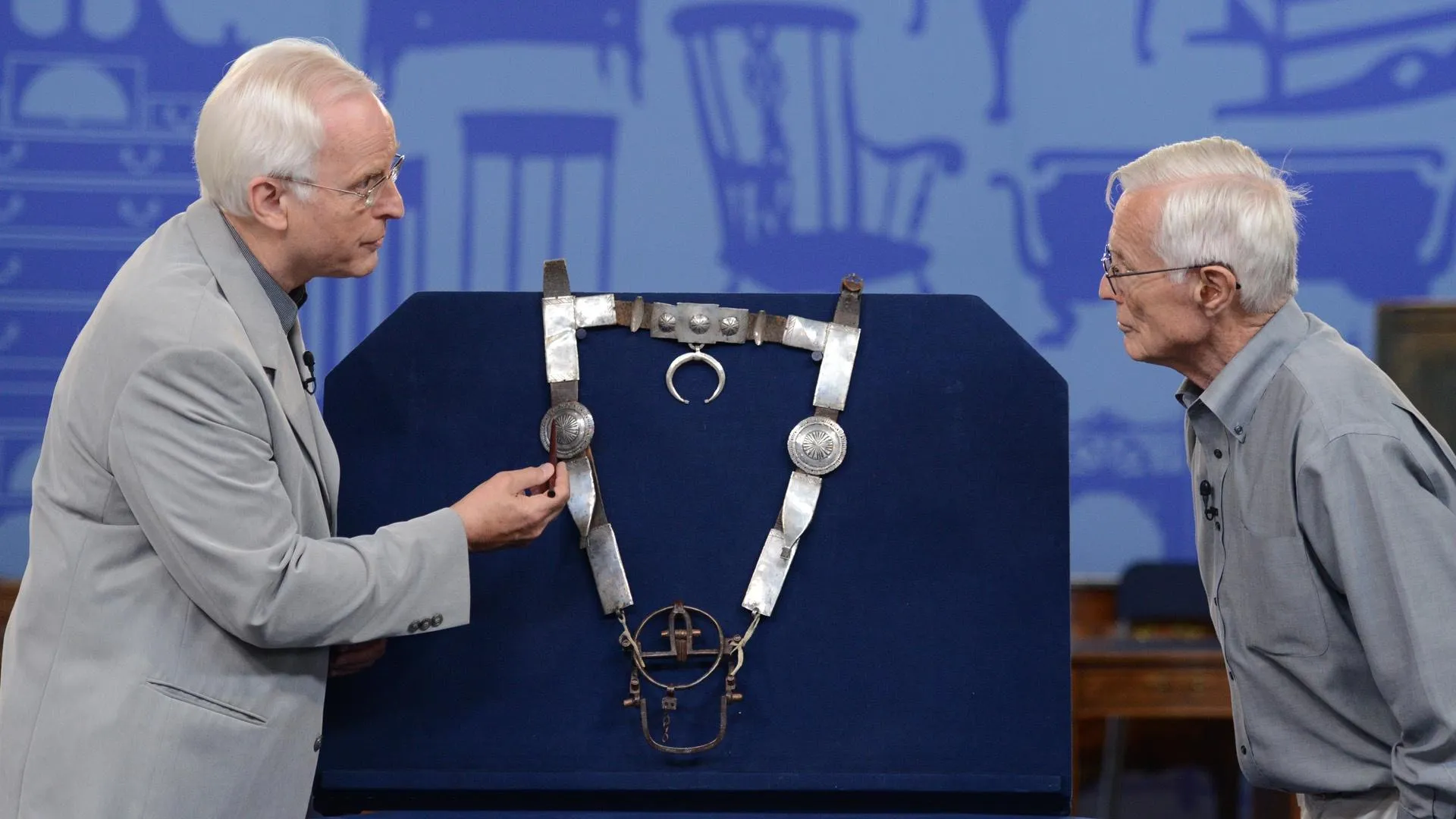GUEST: I was on holiday in London and I went into a shop that had all silverware and for me, this piece was the one. And it was 150. Now I don't know if it was dollars or pounds sterling. I didn't know how old it is and I still don't, but it looks like it could have been made yesterday.
APPRAISER: It does, and how old do you think it might be?
GUEST: Well, I think it's from maybe the 1930s or so.
APPRAISER: It certainly has a look of the 1930s, if you like. It could pass for an Art Deco soup tureen, but it's not. And I'm going to turn it over and we'll look at the marks on it and that'll tell you a little more about it. You can see the name on the top of the designer: Dr. Christopher Dresser. And underneath that is the mark of the manufacturer, the initials H&H, which stand for Hukin & Heath. Hukin & Heath were a large manufacturer of silver plate, mostly it's made of silver plate, in the Midlands of England in Birmingham. And what I love about this is it doesn't look its age. This would date to the late 1870s in most likelihood, or perhaps 1880. It's actually Victorian, and Christopher Dresser was, in many ways, the ultimate Victorian designer. He was born in 1834 and died in 1904, so his lifetime spans the Victorian era completely. He was born in Glasgow in Scotland. As a young man he studied botany, he studied the arts, he studied the decorative arts and he studied design. He designed almost everything that you could imagine in the applied arts, as we call it, from wallpaper to ceramics, glass, some furniture and a wide range of things. In his formative years he was heavily influenced by Japanese taste. When he was in his 40s he traveled to Japan, 1876, and brought back with him the aesthetic, if you like, of Japanese art. And the principles of Japanese art dictate that beauty can be and should be achieved through simplicity. And you can see that, I think, beautifully executed in this soup tureen. These are typically, by the way, found without the ladle. Have you ever had it valued or do you have an idea of what it would be worth today?
GUEST: Well, £150, so I hope it's worth double that.
APPRAISER: It is worth quite a bit more than double that. How long ago was it you bought it?
GUEST: In 1978.
APPRAISER: I would say today you wouldn't have a chance of buying this in London for less than probably £4,000 or £5,000. If it came up at auction in the United States, it'd probably be between $6,000 and $9,000.
GUEST: Wow. I'm delighted. Thank you.











